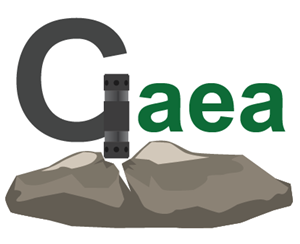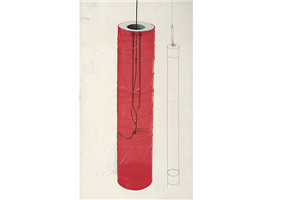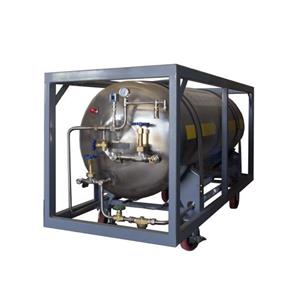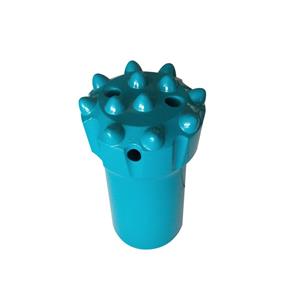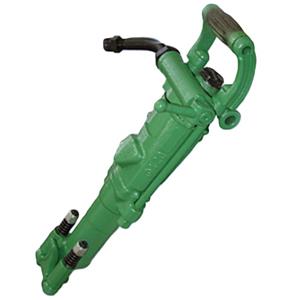Why high‑pressure DTH hammers are winning over the construction world
Among the drilling tools used in rock excavation, high‑pressure down‑the‑hole (DTH) hammers stand out as true heavyweights. Whether in hard‑rock mines or complex infrastructure sites, they consistently deliver performance that earns broad acceptance. Contractors often ask: what are the real advantages of this tool, and which challenging scenarios can it handle? Below is a focused explanation of its core strengths and typical applications.

I. Five core advantages: why they’re efficient and durable
The popularity of high‑pressure DTH hammers is no accident. Five key advantages address the main pain points of rock drilling and deliver both higher productivity and longer service life.
Maximized impact efficiency — fast, accurate, and forceful in hard rock Unlike conventional tools that transmit force indirectly, high‑pressure DTH hammers use a piston‑direct‑drive arrangement that applies energy directly to the bit with minimal transmission loss. This direct‑impact design allows them to handle hard formations such as granite and basalt with ease, producing much higher drilling speeds and a “fast, precise, and forceful” drilling effect.
Smooth cuttings evacuation — no more hole‑bottom blockages Hole‑bottom blockage by cuttings is a perennial efficiency problem. High‑pressure DTH hammers solve this by using the exhaust gas from the impact cycle to flow out through the bit, carrying cuttings away from the hole bottom. This integrated impact‑and‑evacuation process prevents cuttings build‑up at the source and reduces the need for frequent stoppages to clear the hole.
Strong structural adaptability — seamless switching across scenarios Adaptability is critical across diverse sites and formations. The hammer integrates the piston, inner cylinder, and valve seat inside a slim outer body, yielding a compact and stable assembly. It connects firmly to the drill string via an upper sub and transmits feed and rotation through a bit retention sleeve. This design allows rapid adaptation for surface or underground work with minimal setup changes.
Precise wear control — longer life and lower cost Rapid wear increases replacement costs and delays projects. High‑pressure DTH hammers enable operators to tune rotational speed and feed thrust according to formation hardness—lower speeds and greater thrust in hard formations to reduce bit wear, higher speeds in soft formations to increase advance rate—combined with standardized lubrication and maintenance practices to significantly slow internal component and bit wear and extend service life.
Easy maintenance — clear fault diagnosis and simple fixes Equipment that is easy to maintain reduces operational headaches. Common failure causes for high‑pressure DTH hammers—insufficient lubrication, blocked air passages, component wear—are well understood, and each has a clear troubleshooting procedure. For example, check the lubrication supply for lubrication failures, or clear the air passages for gas flow issues. Many faults can be located and fixed without specialist intervention, lowering maintenance difficulty and cost.

II. Five typical application scenarios: deploy where needed
Thanks to the advantages above, high‑pressure DTH hammers are widely used across multiple construction fields—from mining to infrastructure to municipal emergency works.
Mining: the main tool for hard‑rock boreholes In open‑pit stripping, borehole drilling for blasting, and underground tunneling and blast hole drilling, high‑pressure DTH hammers are the go‑to choice. Especially in high‑hardness ores like granite and basalt, they drill efficiently and lay the groundwork for blasting and extraction, significantly boosting mining productivity.
Infrastructure construction: an all‑rounder for roadbeds and tunnels For road and rail subgrade excavation, pile foundation drilling for bridges, and tunnel excavation tasks such as forepoling and blast holes, DTH hammers meet the high demands for precision and speed. Their efficiency and stability make them well suited to a wide range of infrastructure applications, helping projects meet quality and schedule targets.
Water conservancy and geotechnical engineering: a precise drilling assistant Tasks such as anchor boreholes for dam reinforcement, exploration boreholes in geological surveys, and anchor bolt holes for slope stabilization require precise, stable drilling. High‑pressure DTH hammers allow accurate control of hole depth and diameter, delivering reliable hole quality even in complex geology and supporting water‑conservation and geotechnical works.
Building materials and stone processing: an effective tool for block extraction In block stone quarrying and in drilling tasks for raw material mines like limestone for cement plants, high‑pressure DTH hammers play a key role. They enable precise perforation that reduces damage to quarried blocks and provide efficient drilling to meet raw‑material production needs.
Municipal and emergency engineering: a challenger in confined, complex environments In urban metro construction auxiliary drilling, utility tunnel works, and emergency geological remediation (e.g., grout holes, drainage holes), space is limited and conditions are complex. The compact build and operational flexibility of high‑pressure DTH hammers allow stable work in tight spaces, while their efficient drilling and cuttings removal speed up municipal construction and emergency response tasks.
In short, high‑pressure DTH hammers combine high impact efficiency, reliable cuttings evacuation, structural versatility, controlled wear, and straightforward maintenance—qualities that make them a favored choice across a wide range of demanding drilling applications.
